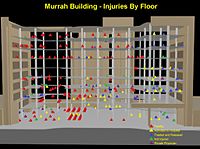
Photo from wikipedia
Abstract Mining blasts may be defined as the use of explosive charges in a controlled manner by following a tightly controlled timing sequence according to an assigned firing order. Changes… Click to show full abstract
Abstract Mining blasts may be defined as the use of explosive charges in a controlled manner by following a tightly controlled timing sequence according to an assigned firing order. Changes of timing between charges may result in an altered firing order and failure of the blasting sequence, which can cause high vibration levels, poor fragmentation, and/or an undesirable rock mass movement direction. Despite the importance of timing in determining mine blast results, there exists a lack of methodologies or tools with which to assess performance of a complete blast based on delay type and timing sequence. This document applies reliability engineering principles to evaluate the performance of a mine blast. The analyses are based on test results of the accuracy and precision of electronic and pyrotechnic detonators for typical firing times used in a surface coal mine, but may be applied to a variety of mines and timing scenarios.
Journal Title: International journal of mining science and technology
Year Published: 2017
Link to full text (if available)
Share on Social Media: Sign Up to like & get
recommendations!